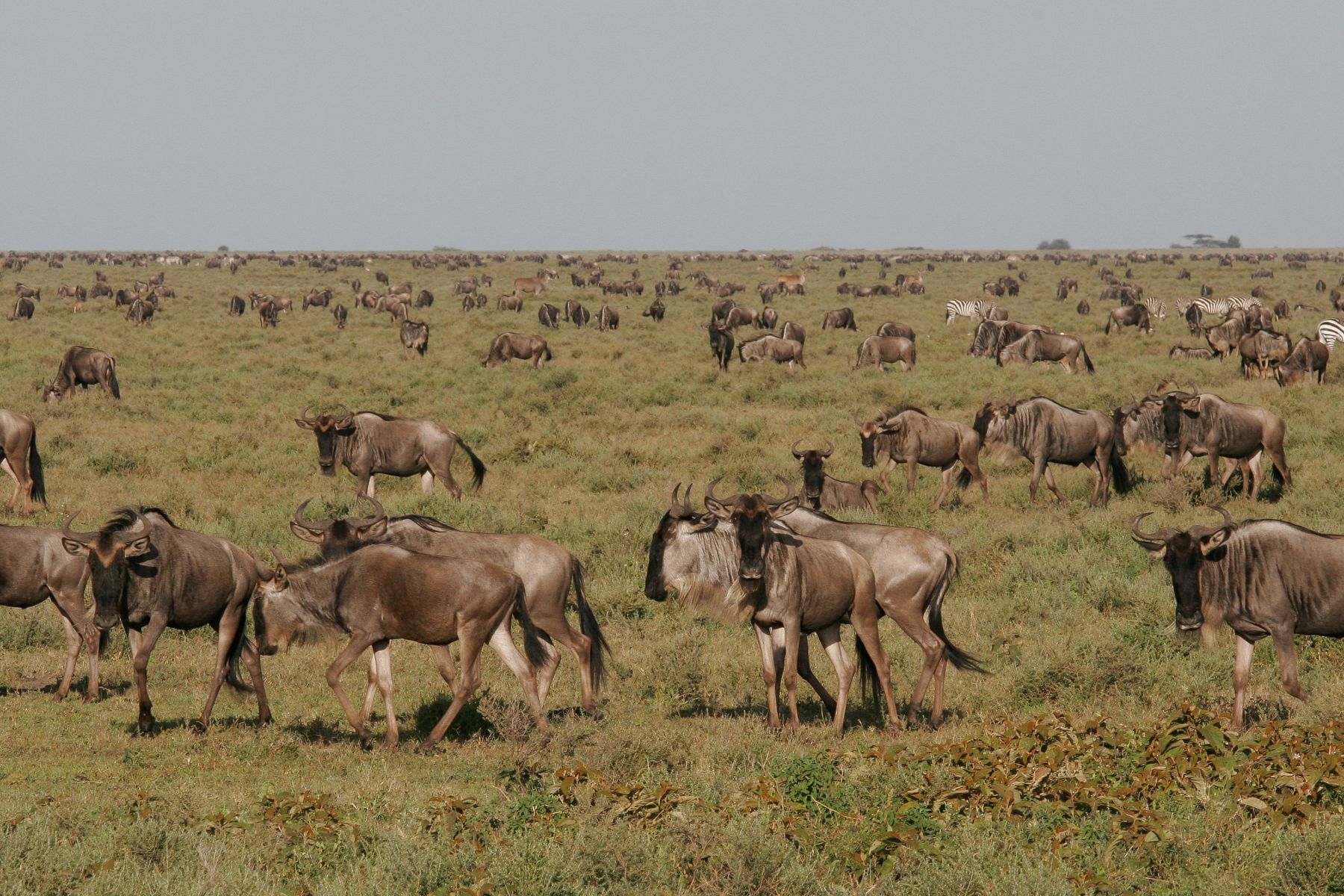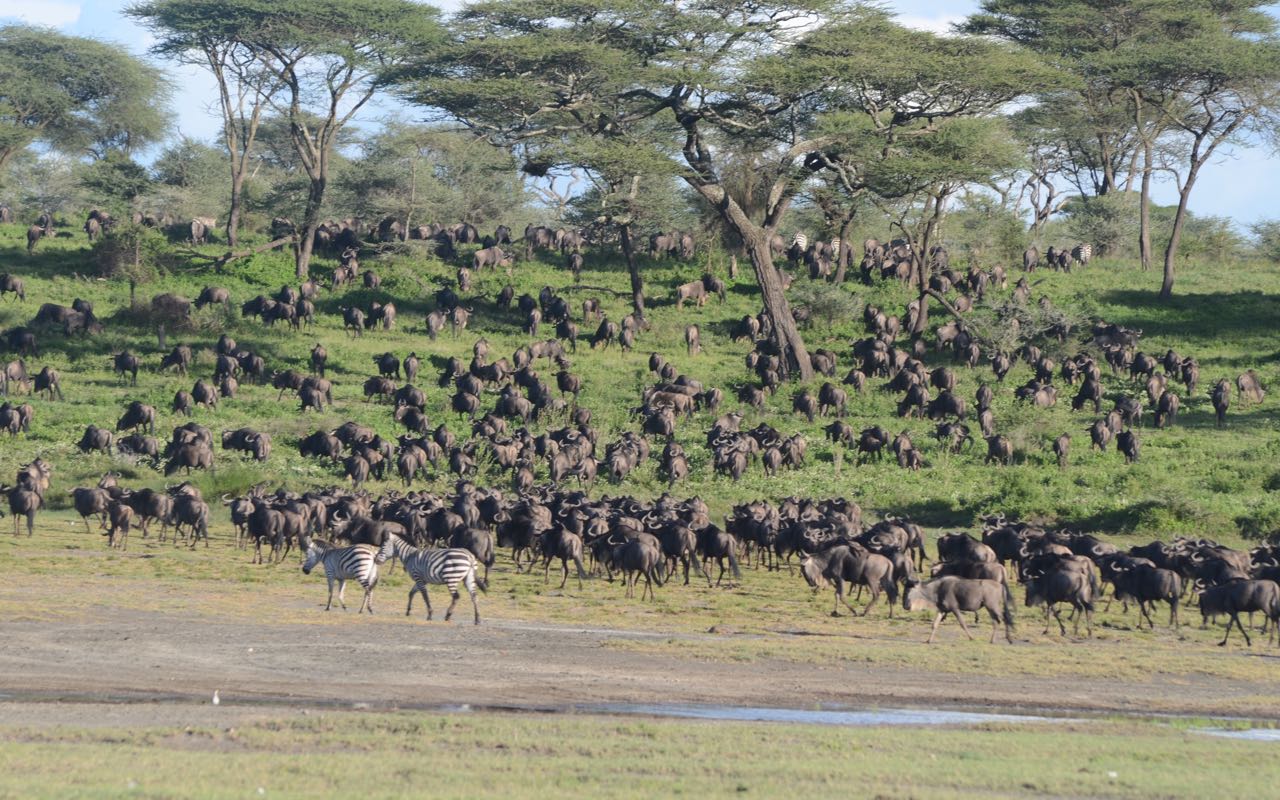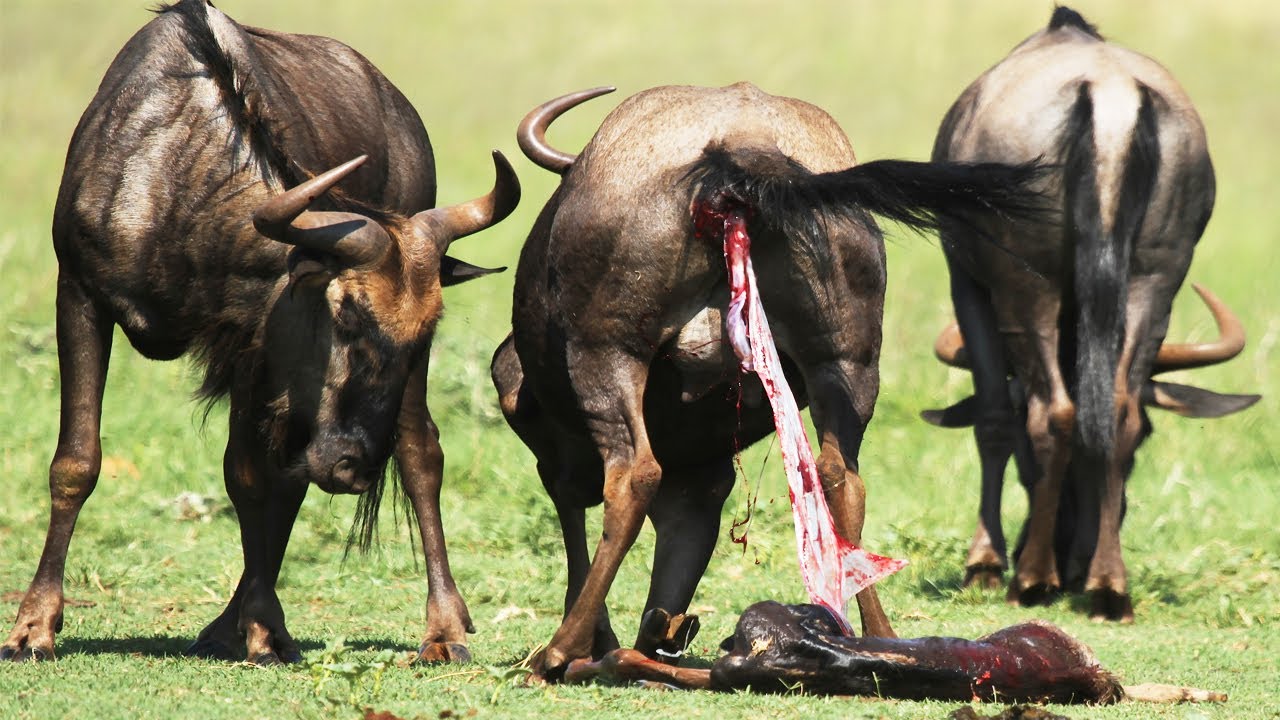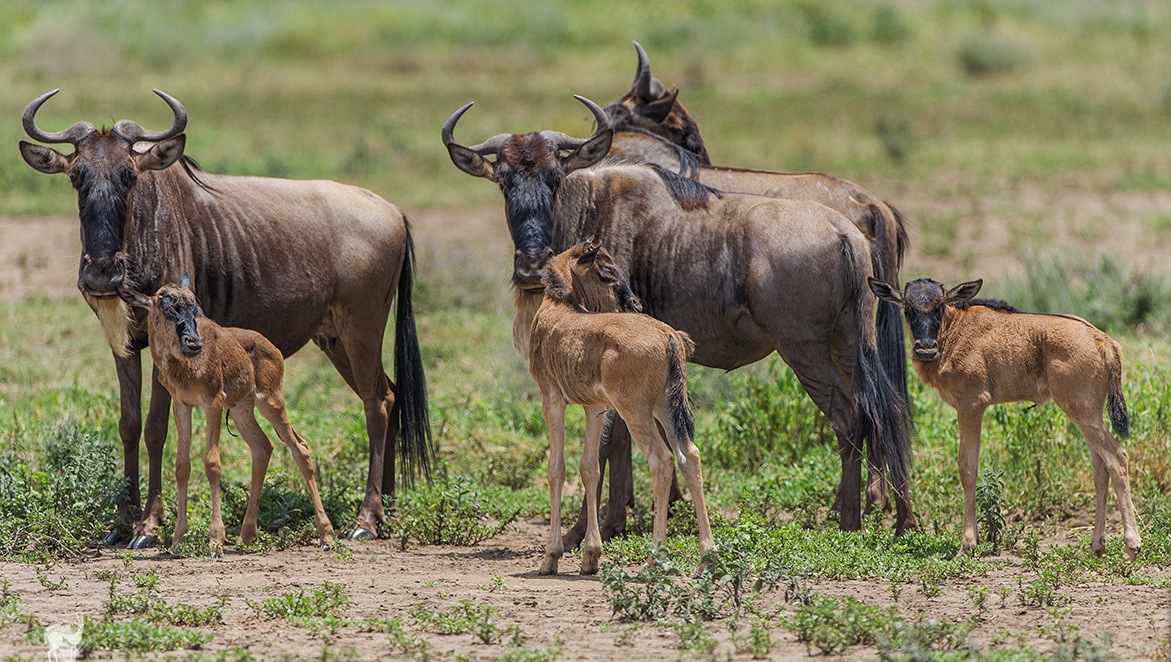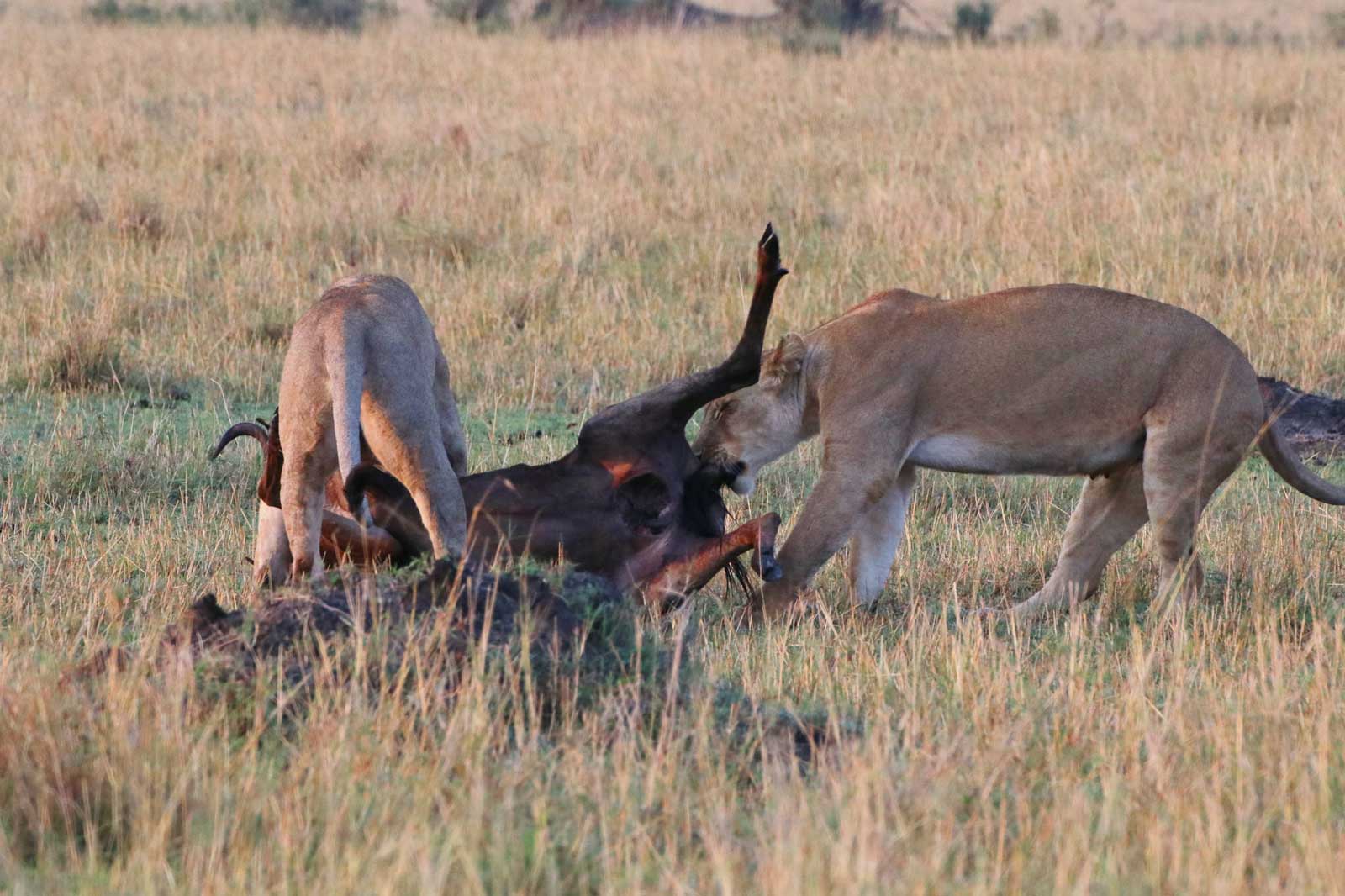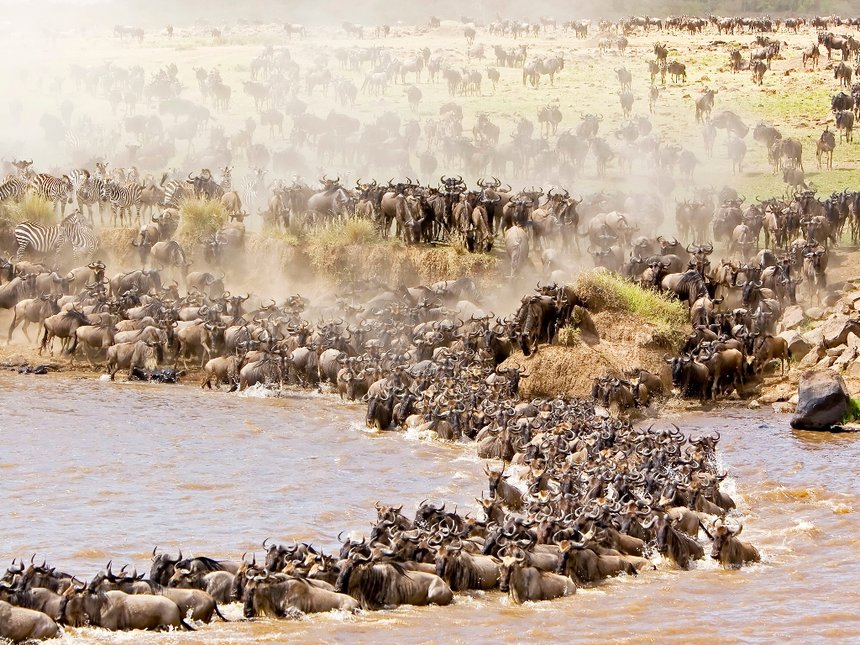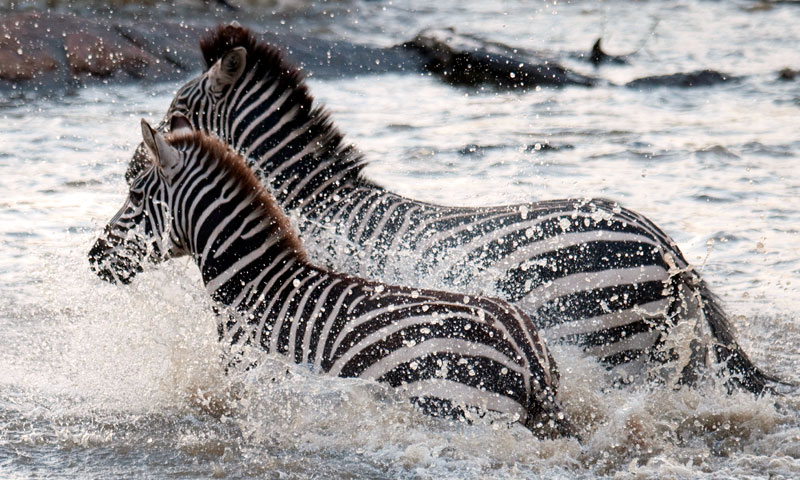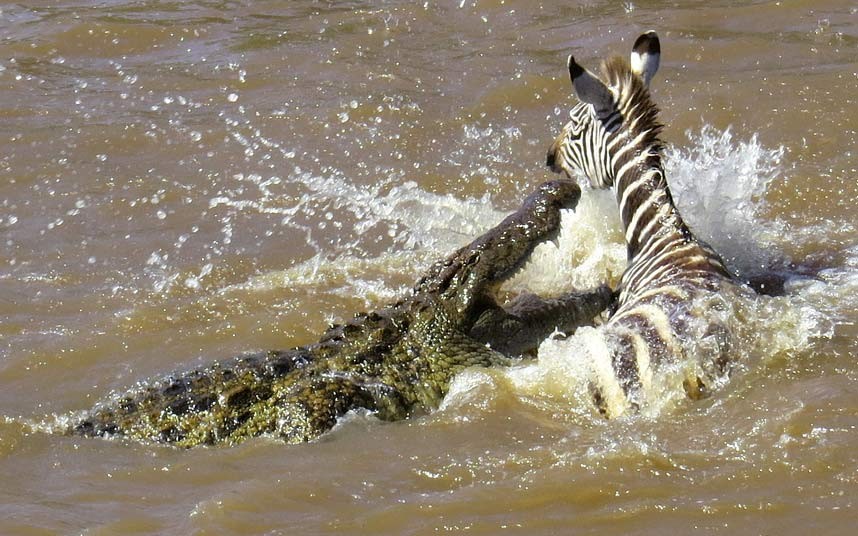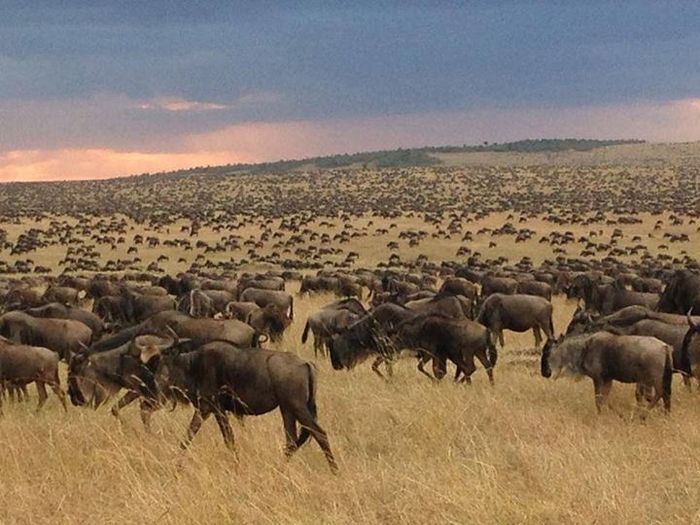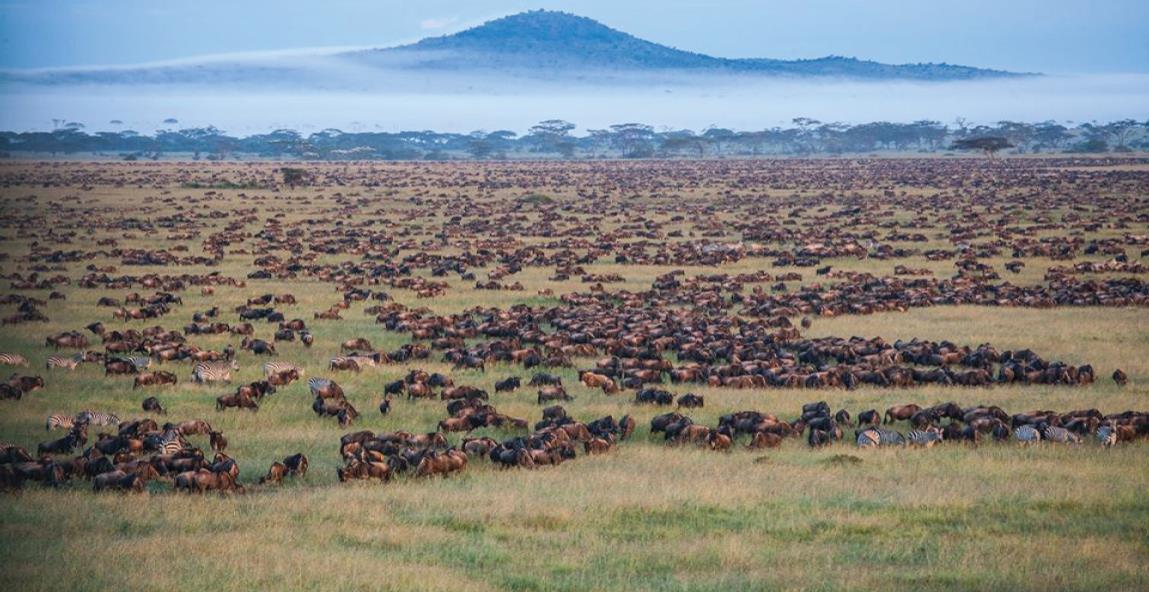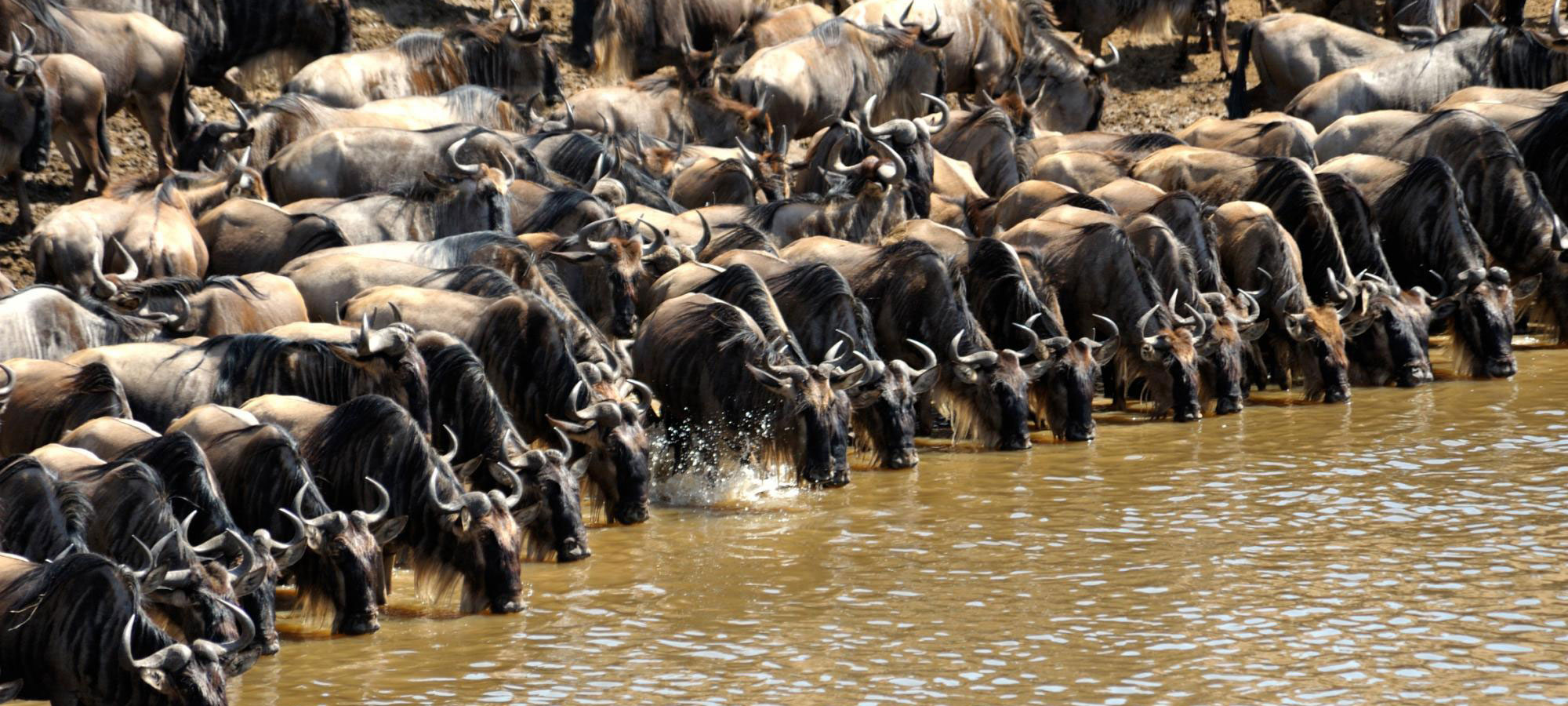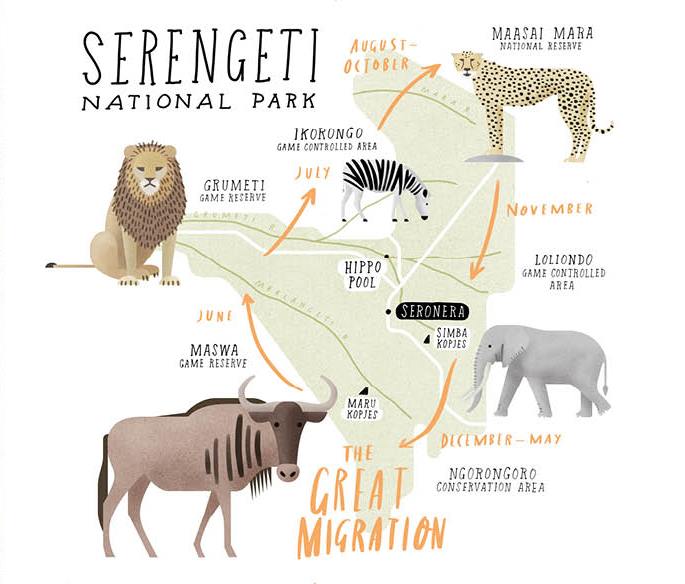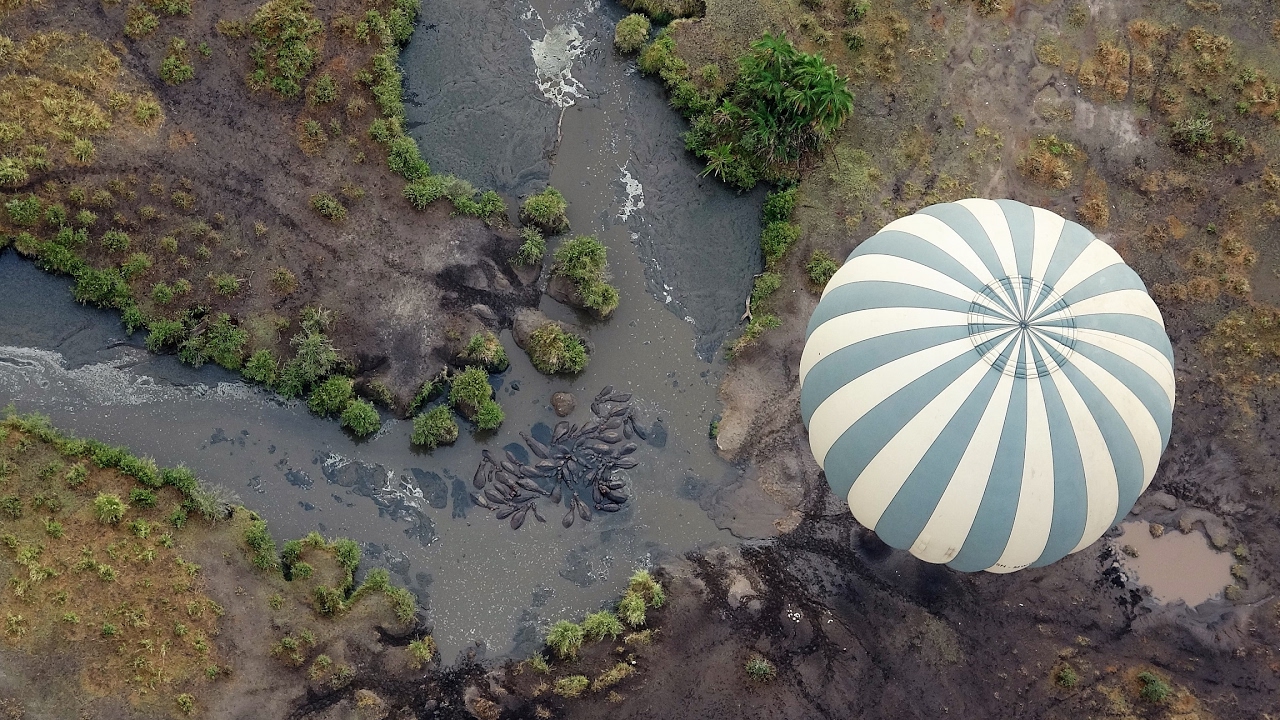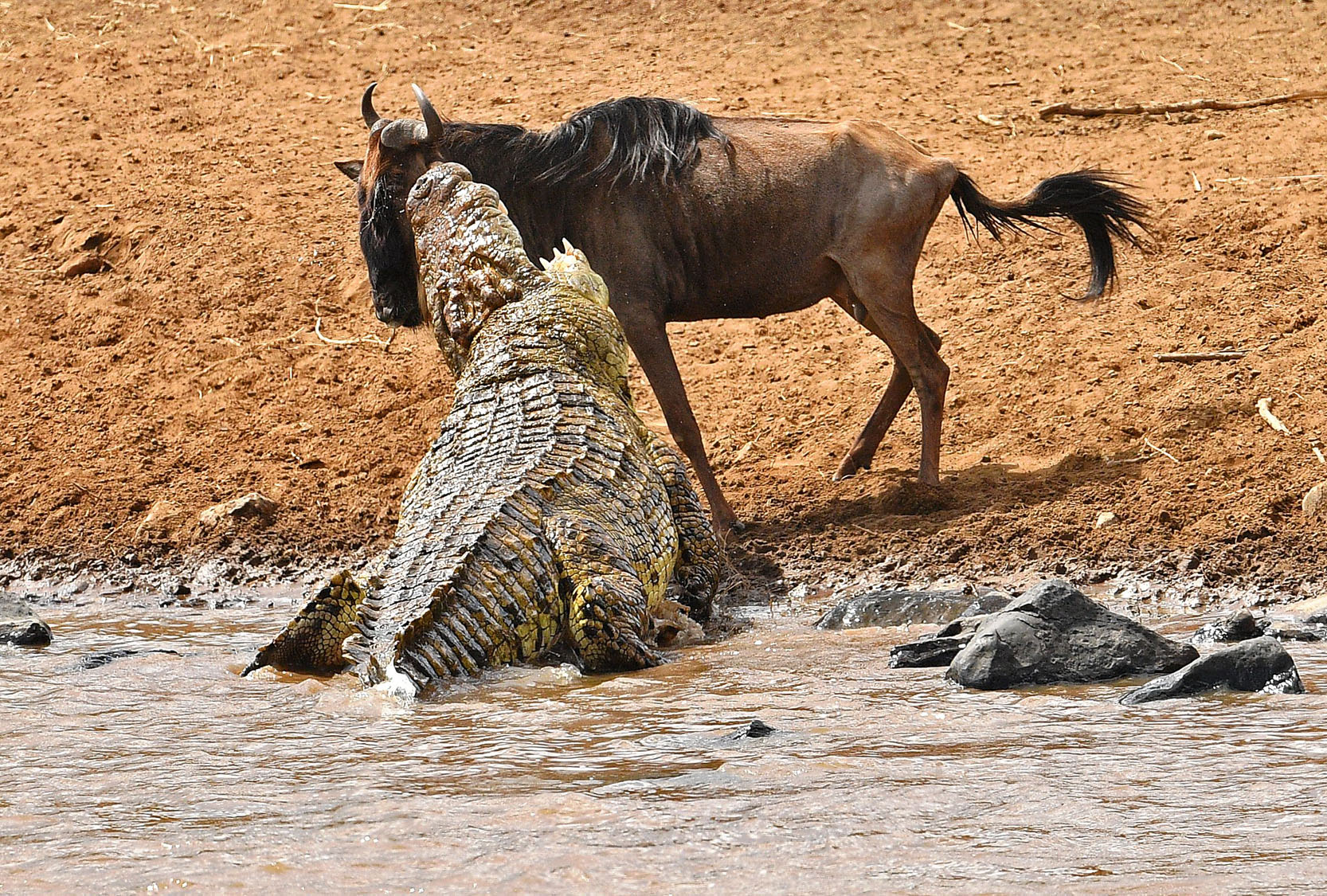The Great Wildebeest Migration
The Greatest Show on Earth: Africa’s Wild Migration Explained.
From the Serengeti in Tanzania, to the Maasai Mara in Kenya, the Great Wildebeest Migration attracts thousands of nature enthusiasts, filmmakers and photographers who come from around the world to witness one of Africa’s most dazzling cycles of life.
What is the Great Migration?
Each year, almost 1.8 million wildebeest and 20000 plains game migrate from Tanzania’s Serengeti to the south of Kenya’s Maasai Mara in search of lush grazing grounds and life-giving water. This treacherous odyssey is dictated by the seasons and where the rains are, the wildebeest are not far behind. This epic journey from north to south spans almost 3000 kilometers and is virtually endless.
This great spectacle of nature is an iconic safari option for avid travellers, nature lovers and those who want a little more from their African experience.
Rather than having a start or end point, the Great Migration moves rhythmically in a clockwise direction, making herd tracking unpredictable.
A Month-by-Month Guide to the Wildebeest Migration
It is rated as one of the world’s most spectacular natural events – every year over a million wildebeest, zebra and antelope migrate clockwise around the Serengeti-Maasai Mara ecosystem, taking in two different countries and making time for birthing, courting and mating on the way.
But the trouble with the Wildebeest Migration is that if you get your timing wrong, you will end up gazing out over a wildebeest-less savannah and wondering where all the animals went. You need to work out where to go and when.
The Migration Timetable
January:
The herds are in Tanzania’s Serengeti, moving south from the north-east region and into the southern Serengeti, Ndutu area and Ngorongoro Conservation area – which often means out of the confines of the (unfenced) national park itself. It is calving season – prepare yourself for lots of wobbly babies… and lots of heartbreak as predators swoop in.
February:
The good grazing of the Southern Serengeti, Ndutu and Ngorongoro Conservation areas means the herds remain in the far south.
March
They are still in the south but the grasses have all been munched up, the last calves born and the herds are starting to gather in preparation for the next leg.
April:
Make sure you are on the southern Serengeti plains – the wildebeest begin their northward journey, and many have left already and are in the central and even western Serengeti.
Opportunistic predators follow the herds; always looking for an easy kill…Your senses will be on overdrive as you drive through stomping, bellowing herds of wildebeest.
May:
Wagons roll! The massed herds are on the go, huge columns of up to 40km in length can be seen as the wildebeest funnel up into the central and western Serengeti.
June:
Head for the central and western Serengeti – the herds are there and getting ready for the toughest part of their odyssey.
July:
Book early – it is the Big Event: river crossings. The herds have reached the western Serengeti and Grumeti Reserves and are peering closely at the brown waters of the rivers they have to cross. Why? Huge Nile crocodiles, that is why.
August:
The survivors celebrate by feasting in the northern Serengeti and begin crossing back into Kenya’s Maasai Mara National Reserve. You need a passport to cross; the wildebeest are exempt.
The eventful river crossings are bittersweet moments for the herds.
The herds cross the Grumeti & Mara Rivers during July & August – the most dramatic aspect of the Migration.
September:
The herds break up into smaller groups – about half of the animals remain in the northern Serengeti, the rest are swapping stories in the Maasai Mara.
October:
Your best bet is the Maasai Mara but bear in mind it is a far smaller reserve than the Serengeti and there may be a lot of other visitors. The conservancies in the Mara are much less crowded and, not only will you still be able to witness the Migration, you will also be benefitting the Maasai communities who have lived there for thousands of years.
November:
The short rains have begun, propelling the wildebeest to leave the now denuded grasslands of the Maasai Mara and back into the rejuvenated Serengeti.
December:
Fresh grazing sees the wildebeest clustered in the north-eastern Serengeti (around Lobo in particular) as well as the southern Serengeti. Calving begins again, the predators move in again, and the cycle of life begins all over again.
10 fascinating facts about the Great Wildebeest Migration
The Great Wildebeest Migration refers to the huge annual movement of vast numbers of wildebeest accompanied by large numbers of zebras and gazelles searching for food and water between Tanzania and Kenya.
Although the migrations occur in a cycle between Tanzania and Kenya, most of the movement takes place in Tanzania which covers Serengeti National Park, Ngorongoro Conservation Area, Loliondo Game Controlled Area, and Grumeti Reserve. In Kenya the migration stretches to the Maasai Mara Game Reserve, bordering Serengeti National Park in the north.
From late November to mid-March, the wildebeest and other animals are already in the southern Serengeti and Ndutu in the Ngorongoro Conservation Area, mainly moving between the transitional borders of the two reserves.
It is calving season for wildebeest at this time of year. With lots of calves born in the area, a host of predators like lions, leopard, hyena and cheetahs are around as they take advantage of the easy prey.
- The Great Migration sees over 1.8 million wildebeest, 200,000 zebra and a host of other antelope travelling cross country.
- Between January and March, half a million wildebeest are born each year in the Serengeti. In February, the month with the highest calving rate, around 8,000 wildebeest are born each day.
- The Great Migration is the largest overland migration in the world. The animals travel a total of 1000 km or more during each cycle
- While the migration may seem like a chaotic frenzy of movement, research has shown a herd of wildebeest possess what is known as ‘swarm intelligence’, where the wildebeest systematically explore and overcome an obstacle as one.
- The reason why zebra and wildebeest graze in harmony together is because they each eat different parts of the same type of grass.
- Because wildebeest have no natural leader, the migrating herd often splits up into smaller herds that circle the main, mega-herd, going in different directions. When considering these smaller, split herds the whole migration can cover over half of the whole Serengeti.
- The Serengeti National Park eco-system is the oldest on the planet. It boasts a diversity of plants and animals that is unavailable anywhere else on the globe.
- During the migration around 300,000 wildebeest and 50,000 zebra are killed off every year as a result of predation by carnivores, but also from thirst, hunger, and exhaustion.
- The crocodiles awaiting the herds in the Mara River drown their prey by clutching them in their strong jaws and pulling them below the water, twisting them to break off bite-size pieces. A crocodile can lunge more than half of its body length out of the water to grab a potential victim and can also use its tail as a secondary weapon.
- There are more than 3,200 lions currently living in the Serengeti ecosystem that follow the migratory herds across the reserve.


